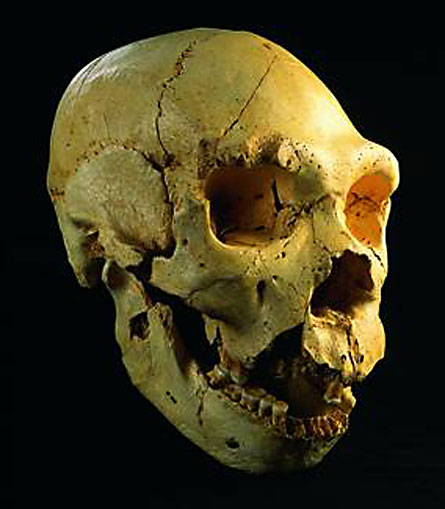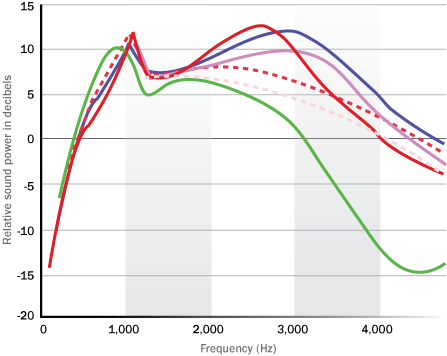Loud and clear
Fossil finds suggest an early origin for human speech
It may be time to rethink the stereotype of grunting, wordless Neandertals. The prehistoric humans may have been quite chatty — at least if the ear canals of their ancestors are any indication.


The findings suggest human speech may have originated earlier than some researchers contend. Anthropologists disagree about whether language sprang up rapidly around 50,000 years ago or emerged more gradually over a longer period of time, says Rolf Quam, a paleoanthropologist at the American Natural History Museum in New York and coauthor of the new study.
The auditory bones of 530,000-year-old skulls indicate that an early human species called Homo heidelbergensis may have heard sounds much the way people do today. H. heidelbergensis are thought to be an ancestor of Neandertals. The findings could reignite debate about whether Neandertals could speak, Quam and colleagues report. The study is the first to use a fossil to reconstruct sensory perception in any Homo species, they add.
The skulls are from a site in Atapuerca, Spain called Sima de los Huesos, or “pit of the bones.” The Atapuerca research team, which includes members from many disciplines and universities, used CT scanning of the skulls to reconstruct the size and shape of the ear canals, Quam says.
The length of the ear canal determines what frequencies of sound waves resonate, and are therefore heard more easily, says Sunil Puria of StanfordUniversity, who models hearing patterns from ear structure.
The geometry of the ear canal reveals that the hearing patterns of H. heidelbergensis overlapped with those of modern-day humans. Both modern people and the ancient hominids have especially sharp hearing in the 2 kilohertz to 4 kilohertz frequency range, where much of the sound energy of spoken language is transmitted.
Chimpanzees, the closest living relatives of Homo sapiens, by contrast, have a dip in sensitivity around 4 kilohertz, says Mark Coleman of Midwestern University’s campus in Glendale, Ariz. Coleman studies primate hearing but was not involved in the study. “Of course primates can differentiate sounds related to speech — so can my dog — the key is that humans appear to have a maximum sensitivity in the range that contains a lot of overtones in speech.”
The results don’t necessarily show that the ancient humans could speak, Quam says. “We’re saying that the ear changed for some reason and that those changes facilitated the possibility of language development,” he says. The team reported the findings July 3 in Paris during the Acoustics ’08 conference.
Researchers have long tried to determine whether Neandertals could speak by reconstructing their vocal tracts, Quam says. But soft tissue makes up most of the voice box, so few traces remain in the fossil record. The ear is a better candidate because the bony structure reveals more about hearing capacity.
But, says Coleman, the model Quam and colleagues used to reconstruct the ear requires researchers to input many different variables — including characteristics such as the elasticity of ligaments that are no longer present in the fossils. “You kind of have to make some assumptions, and I worry that at some point the assumptions of the models are going to break down.”
If H. heidelbergensis did have modern hearing capacity, however, it’s logical to assume they had a primitive form of human communication, he adds. Though it’s possible that H. heidelbergensis could hear in that frequency range but didn’t use that ability for anything special, “sensory systems are extremely neurologically expensive,” Coleman says. It’s unlikely that the body would invest the resources in maintaining such a system if it didn’t serve a purpose, he says.
The research comes on the heels of an April Molecular Biology and Evolution study showing that Neandertals had two genes that are similar to those implicated in language development in humans but differ from those in chimpanzees.







